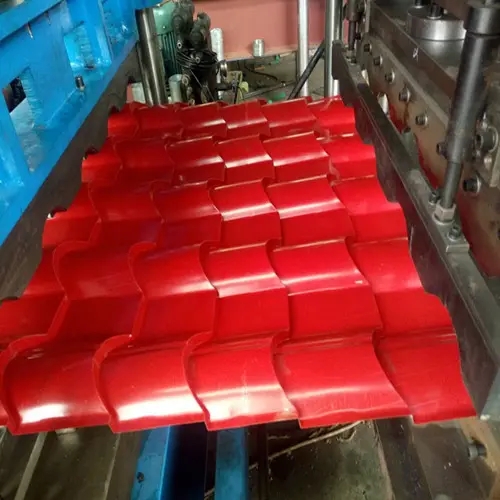
Understanding Cable Tray Making Machines A Comprehensive Overview
In today's rapidly evolving technological landscape, the demand for structured and organized cabling solutions has never been higher. Cable trays play a critical role in ensuring that electrical and communication wires are neatly organized, protected, and easily accessible. To meet this demand, cable tray making machines have emerged as essential tools in the manufacturing industry. This article explores the features, advantages, and applications of cable tray making machines.
What is a Cable Tray Making Machine?
A cable tray making machine is a specialized piece of equipment designed to produce cable trays from various materials, primarily metal such as steel or aluminum. These machines facilitate the automatic or semi-automatic fabrication of cable trays, ensuring precise cutting, bending, welding, and finishing. The trays produced by these machines come in different sizes and designs, allowing them to cater to various industrial and commercial applications.
Key Components of Cable Tray Making Machines
The efficiency and functionality of cable tray making machines depend on several key components, including
1. Roll Forming System This is the primary mechanism that shapes the raw material into the desired tray profile. Roll forming machines can produce trays with different heights and widths, accommodating the requirements of various projects.
2. Cutting Mechanism Once the trays are formed, they need to be cut to the correct length. The cutting mechanism integrated into the machine ensures precise, burr-free cuts, which are critical for effective installation.
3. Welding Unit For tray designs that require joining pieces or enhancing structural integrity, the welding unit securely fuses metal parts together, providing strength and durability to the finished product.
4. Control Panel Modern cable tray making machines are equipped with user-friendly control panels that allow operators to easily set parameters for production, monitor processes, and troubleshoot issues.
5. Stacking and Packaging Systems After production, trays need to be efficiently stacked and packaged for transportation. Many machines come with automated systems that streamline this process, improving overall productivity.
Advantages of Cable Tray Making Machines
Using cable tray making machines presents several advantages for manufacturers
1. Increased Efficiency Automation significantly speeds up the production process. These machines can produce trays at a much faster rate than manual methods, reducing lead times and increasing output.

2. Consistency and Quality Cable tray making machines ensure uniformity in the dimensions and quality of trays. Such consistency is crucial for large-scale projects where compatibility and reliability are required.
3. Reduced Labor Costs Automation reduces the need for extensive manual labor, leading to lower labor costs. Operators can focus on overseeing the machine's performance rather than performing repetitive tasks.
4. Versatility Many cable tray making machines can be adjusted for different tray styles and sizes. This versatility allows manufacturers to cater to a wide range of customer demands without needing multiple machines.
5. Lower Material Waste Advanced machines are designed to optimize material usage, reducing wastage during the production process. This not only saves costs but also promotes sustainable manufacturing practices.
Applications of Cable Trays
Cable trays produced by these machines find applications in numerous industries, including
1. Construction In commercial and residential buildings, cable trays are essential for organizing electrical and communication wiring.
2. Data Centers With the increasing demand for data processing, cable trays are crucial for maintaining the vast networks of cables in data centers.
3. Manufacturing Facilities Factories utilize cable trays to run electrical lines and ensure safety by keeping cables organized away from foot traffic areas.
4. Telecommunications Cable trays are vital in the telecommunications sector for routing and protecting communication lines.
5. Utilities and Energy Power generation plants and utilities employ cable trays to manage electrical wiring, ensuring safety and reliability in energy distribution.
Conclusion
As technology advances and industries grow, the need for organized and efficient cable management solutions will continue to rise. Cable tray making machines are at the forefront of this evolution, providing manufacturers with the tools they need to produce high-quality trays quickly and effectively. By understanding the features, advantages, and applications of these machines, businesses can make informed decisions about their production processes and ultimately enhance their operational efficiency. In a world where clarity and organization are paramount, cable tray making machines are invaluable assets in ensuring effective cable management.